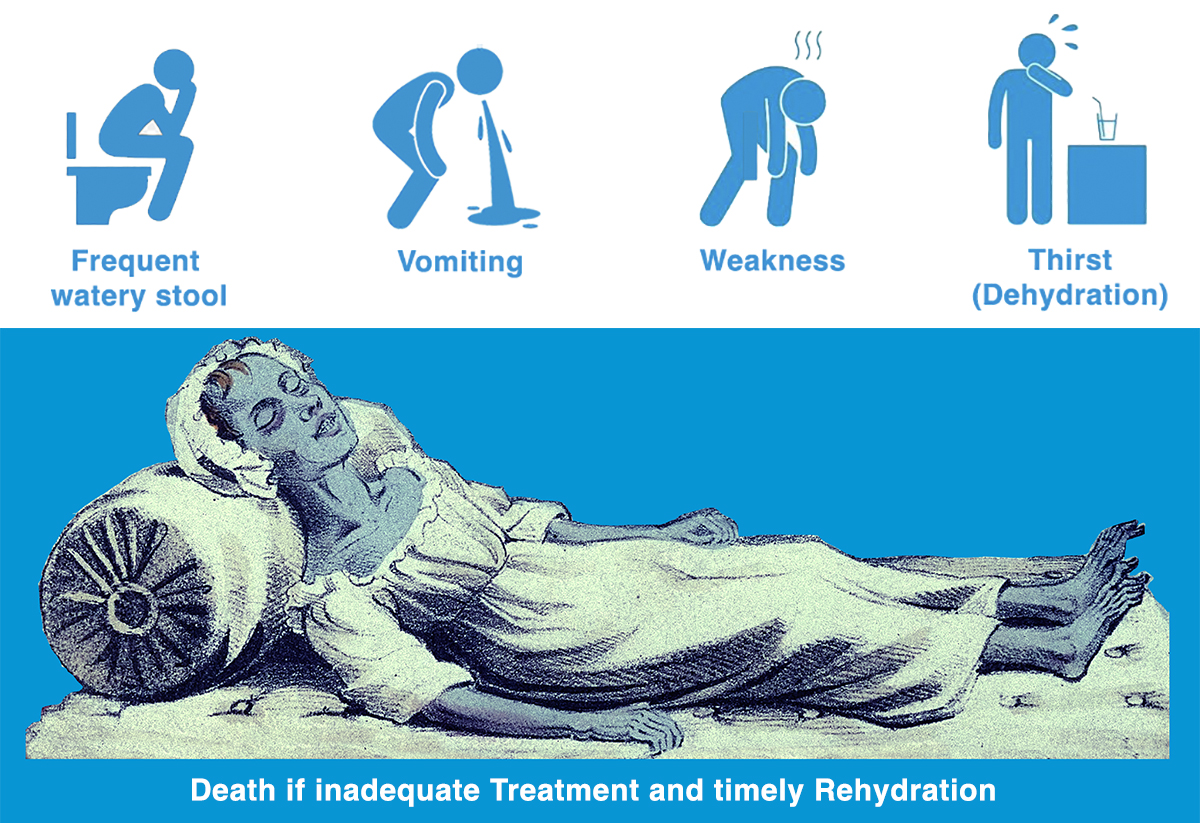Stream 5 - Additional Items
l: Current Cholera Information and Implications of Snow
For clinical symptoms and epidemiological patterns of cholera, there are many sources on the web offering current information on the disease, including the World Health Organization and its six regional offices (Africa, Americas, Eastern Mediterranean, Europe, South-East Asia and the Western Pacific) and WHO’s Weekly Epidemiological Record (WER). Three others that have concise summary information on cholera and cholera prevention and control are listed below.
Clinical and Epidemiological information
Click 
Cholera - Centers for Disease Control and Prevention (CDC)
Click 
Cholera vaccines - Centers for Disease Control and Prevention (CDC)
Click 
The Global Task Force on Cholera Control (GTFCC)
Implications for Contemporary
Epidemiology of John Snow's Approach
Lead author Nigel Paneth (1946-) of the following article is a pediatrician and epidemiologist who was the founding chair of the Department of Epidemiology in the College of Human Medicine, Michigan State University. Having retired in 2021, he is currently Emeritus University Distinguished Professor of Epidemiology and Biostatistics and Pediatrics at the same institution. Among other topics, Paneth is a leading expert on John Snow, serving as author of numerous articles on Snow and co-author of the most comprehensive book on John Snow: Cholera, Chloroform, and the Science of Medicine: A Life of John Snow ( 2003).
In the enclosed PDF, Paneth and colleagues draw attention to John Snow's approach to epidemiology starting with a hypothesis based on his understanding of the disease processes, and testing the deductions that emanated from this hypothesis. They term it the hypothetico-deductive approach.
The utility of the hypothetico-deductive approach was illustrated by John Snow in his 1849 booklet reference #47, when he wrote of the implications of his approach..."If the writer's [John Snow speaking of himself] opinions be correct, cholera might be checked and kept at bay by simple measures that would not interfere with social or commercial intercourse; and the enemy would be shorn of his chief terrors. It would only be necessary for all persons attending or waiting on the patient to wash their hands carefully and frequently, never omitting to do so before touching food, and for everybody to avoid drinking, or using for culinary purposes, water into which drains and sewers empty themselves; or, if that cannot be accomplished, to have the water filtered and well boiled before it is used. The sanitary measure most required in the metropolis is a supply of water for the south and east districts of it from some source quite removed from the sewers."
He subsequently tested his hypothesis in the Broad Street Pump outbreak (or as Paneth et al correctly refer to as "a point-source outbreak superimposed on a propagated epidemic") and the "Grand Experiment," as documented in his 1855 book references #87b and #87c, respectively.
In contrast to Snow, a separate, parallel and more involved investigation was initiated in the Broad Street area by the Board of Health, but more allied with the miasma theory rather than the germ theory favored by Snow. The Board too followed the hypothetico-deductive approach but their hypothesis was poorly defined, resulting in less relevant deductions.
An alternative approach favored by many contemporary epidemiologists is what Paneth et al refer to as black box epidemiology. Here descriptive data are gathered and tested for statistical associations, leading to the construction of hypotheses for subsequent causal investigations.
Both approaches have merit (assuming the hypothesis is well reasoned, with good coherence and specificity - see Paneth et al article), although in Snow's case, Paneth and his associates conclude that the hypothetico-deductive approach "was more effective in clarifying the etiology and transmission of cholera in London and in proposing preventive measures." They recognize, however, that knowing "whether this hypothesis is true under all circumstances," can only be supported "by repeated attempts at refutation" -- that is, more investigations by multiple researchers in different times and different settings.
Click 
Article by Nigel Paneth, MD, MPH, Peter Vinten-Johansen, PhD, Howard Brody, MD, PhD, and Michael Rip, PhD. A Rivalry of Foulness: Official and Unofficial Investigations of the London Cholera Epidemic of 1854. American Journal of Public Health 88(10), 1545-1553, October, 1998.


